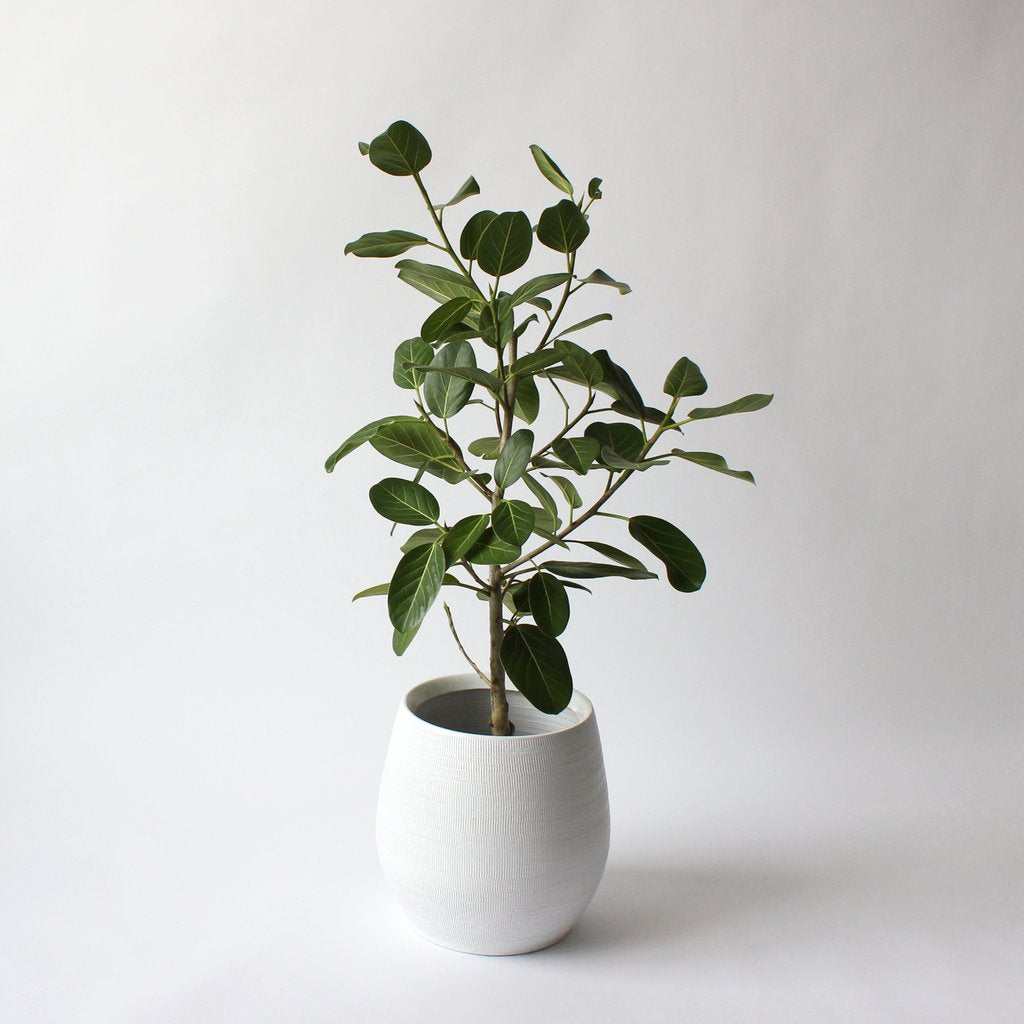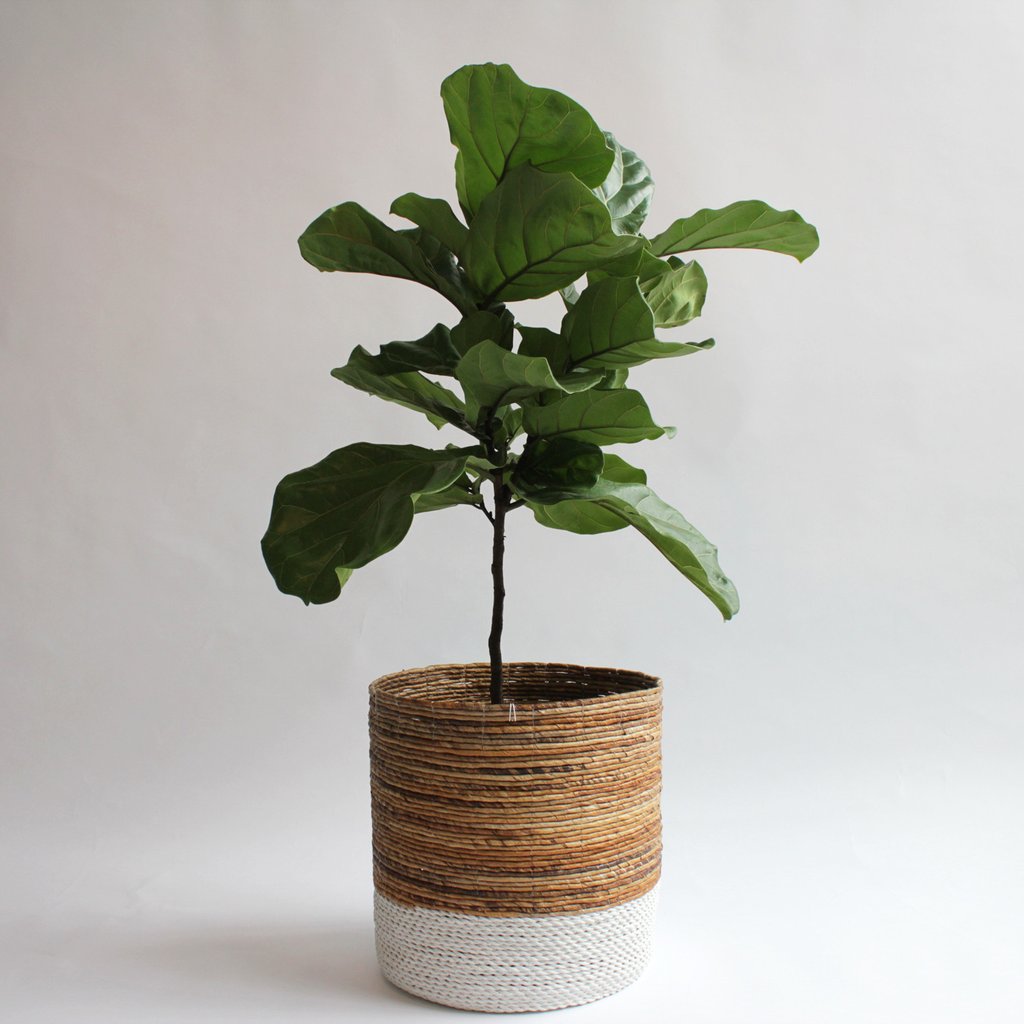Tillandsias: Epiphytes, Pups, Blooms...Oh my!
Air Plants start as very slow growers, so try to be patient and loving with them. Over time, you will find them to be very forgiving plants which thrive from just a few basic steps.
- Bright, indirect light
- Submerge entire plant in room temperature water for 5-10 minutes once or twice a week. Let plants drain upside-down on a towel after their bath for at least 3 hours so they are dry to the touch.
- Fertilize every 2 months with epiphytic/bromeliad/non-urea nitrogen fertilizer for better blooms and daughter growth (pups).
Origins
Tillandsias belong to the diverse bromeliad family. The Tillandsia genus is native to temperate zones throughout Central and South America, as well as Southern North America. Depending on
the species of plant, they can thrive from arid to tropical climates such as deserts, mountains and rainforests. The thinner-leafed varieties grow in rainy areas and the thick-leafed varieties are found
in areas more subject to drought. This is an important consideration to take in while buying an air plant, as it will determine the plants hardiness and specific watering regimen needs.
What is an Epiphyte?
Completely one of a kind and versatile, we love that air plants are epiphytes! Some well known examples are mosses, orchids, bromeliads, and Spanish moss (which is also of the genus Tillandsia.) The term Epiphyte simply refers to a plant that needs no soil to thrive and obtains its nutrients non-parasitically by anchoring itself onto another plant or structure. In order to anchor themselves on to something they will grow roots, but these are only for support and balance purposes. If your plants roots become unruly, you can always trim them back with a scissor, as this will not harm the plant. The ability of an Air plant to just “hang out” results in endless design possibilities, making them a unique and stand out accent in the home.
Basic Care
In nature, Tillandsias are found growing on trees and telephone wires and are somewhat protected from bright direct sun. In the house, let your plant get bright indirect light, as full sun will burn the plant around the edges, especially in the summer months. If you notice browning leaves near the base of the stem, simply pinch them off, this will help to promote new growth. Because Tillandsias obtain no nutrition through their roots, they’ve found another way. They do this brilliantly by using microscopic structures on their leaves known as Trichomes. These miniature hair-like structures allow the plant to derive its moisture and nutrients from the air and rain as well as occasional debris accumulating around it. This plays a vital role in an airplant’s life, especially helping to control the plant’s water retention. Cool huh? You can see why an adequate watering regimen is so important to Tillandsia’s health.
WATERING
The best way to water your air plant is to soak them in a water bath during the morning. At night, air plants’ stomata open which allow gas and oxygen exchange/vaporization to occur. Watering in the morning will help not to interrupt this important process. You can mist your Tillandsia, yet over time this will not be adequate moisture and the plants vascular cells may begin to deteriorate.
Depending on the variety and thickness of the leaves, your air plant should be soaked once a week or once every two weeks. To do this you’ll have to make sure to not use water with a high salt content, or distilled water. Both of these lack vital minerals and nutrients your plant needs, and will ultimately kill the plant after just a few waterings. Rain or pond water is highly preferred but also a bit difficult for most of us to obtain. Using filtered tap water, or tap water which you have left sitting in room temperature for 12+ hours, will suffice. Be sure to submerge the entire plant in the water, pushing it upside down often prevents floating. Leave the air plant in its bath for about 40min – 1hour. Most importantly, let your plants drain on a towel outside of their containers for at least 3 hours. This is the most catastrophic mistake people make. Remember that air plants are used to very arid environments in nature where they are given the chance to dry off. If you place the plant back in its vessel/ container right away the moisture will be retained in the meristem (base region) of the plant and will inevitably create rot.
If you have a flowering air plant, the bloom will often last 2-3 weeks! Unfortunately getting the flower wet will shorten the bloom length – so only submerge the flowering Air plant halfway during this period.
If going on a vacation two weeks or longer, give a water bath for 12 hours the night before you leave, let air out for 12 hours. On return, soak again for 12hours and air out. There are also a few “extras” you can do to promote faster growth and more blooms.
FERTILIZING
Fertilizing your Tillandsia is great to promote faster growth and blooms, but be sure not to overdue this. This step is not necessary if you have access to rain or pond water. We recommend fertilizing no more than once every two months. You can by a standard bromeliad fertilizer and mix it in with your water bath. If not available, use ¼ recommended amount of any water soluble fertilizer as long as it does not have a urea based nitrogen which is preferred for only plants that are kept in soil.
NEW GROWTH – “PUPS”
Sad but true, every air plant will only bloom once in its lifetime. Once the flower has dried up, you should trim off the entire flower stalk, as this will promote “pupping.” Tillandsia “Pups” are simply new plants forming at the base of the plant. They typically begin to grow about two months after the mother plant or the main base of plant has stopped blooming. You can either twist and pull new pups off the mother plant or leave them on as they begin to clump together and the mother plant will slowly die and be replaced by the pups. Be sure to wait until pups are 1/3 to half the size of the mother plant before you remove them.



Comments
Christygriner@yahoo.com —
What should in put in the globe with my plant? Sand? Soil? Rock?